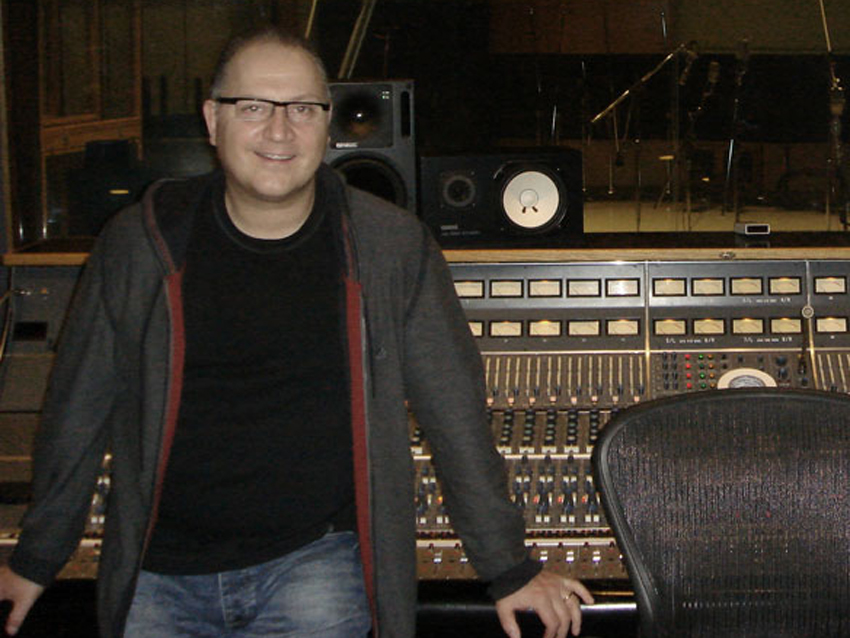
Production legend Gil Norton on 16 career-defining records
In a career spanning four decades, Gil Norton's recordings have captured the zeitgeist of alternative rock and post-punk sensibilities. But the master producer espouses a view that there's no substitute for good old-fashioned songwriting, no matter what genre he's working in.
“When I was a kid, I used to run a folk club in Liverpool, where I grew up," he says. "People used to come down and play songs on the acoustic guitar. So for me, it comes down to 'Does the song work on an acoustic guitar? Is it a good song with just the guitar and voice?' I think I learned that pretty early on.”
And once you've got the songs, get inside them, Norton asserts. Deconstruct them, work them back up from the ground floor, especially before the red light comes on. "Pre-production is the most important part of the recording process," he says. "Pre-production's the bit where you get to know the songs, the band and their expectations of what they want from their work. Then you can start pooling ideas together and see what you both can do and what you can bring, what I need from them and what they need from me."
Norton made good on one of his career goals – "The only two things I ever wanted to do when I was at school, aged around 14, was to be a TV cameraman or a sound engineer" – getting his start as a tea boy at Amazon Studios (later renamed Parr Street Studios) in Liverpool. "I literally did it during my summer vacation," he recalls, "so I did it for about seven weeks, and then I ran the eight-track studio, which was the demo studio. I had about eight weeks of a learning curve, and then I was thrown into the deep end.”
Although he professes to be an equal-opportunity admirer of many different genres and styles of music, Norton has earned a reputation as a crafty channeler for potent guitar-based bands. “I think you've got to understand the type of music you're doing," he insists. "I listen to hip-hop, for instance, but I wouldn't ever think of producing a hip-hop band or artist. If you're going to produce anybody, I think you've got to at least understand what they're trying to achieve so you can be part of the creative process."
On the following pages, Norton looks back at the making of 16 of his most notable recordings.
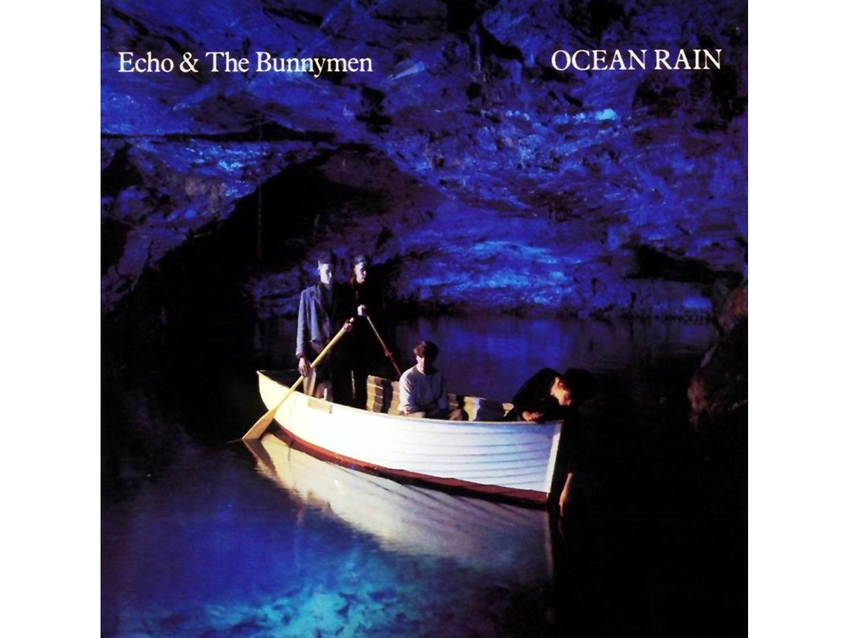
Echo and the Bunnymen - Ocean Rain (1984)
“I was working at Amazon Studios in Liverpool. A lot of bands would come in and demo. Echo And The Bunnymen were obviously one of the major groups at that point, in the early '80s. They'd had three albums out by the time I got involved with them.
“What happened was, Ian McCulloch came in to demo some ideas for what became Ocean Rain. We spent a while together in the studio playing around with some song ideas. We got on really well. Then Will came in, and I got on well with him, too. The band went off to France, and I got a call the next day. Ian said, ‘Gil, you better get on a plane and get over here,’ so off I went. That's how that happened: It was purely through doing demos and getting on well with them.
“At the time I'd never even flown; I'd never been out of the country before. I remember the first time I went into Warner Brothers, I had to meet with the A&R people about the project, and after the meeting they said, ‘Oh, Mr. Norton, your car's here.’ I went down and there was a chauffeur with the full uniform on: ‘Mr. Norton, here's your car.’ I had this massive Mercedes taking me to the airport. It was just like, ‘What is going on here?’ It was a bit bizarre. Ian met me at the airport. He'd come to show me around all of the shady sides of Paris, which we did in the car.”
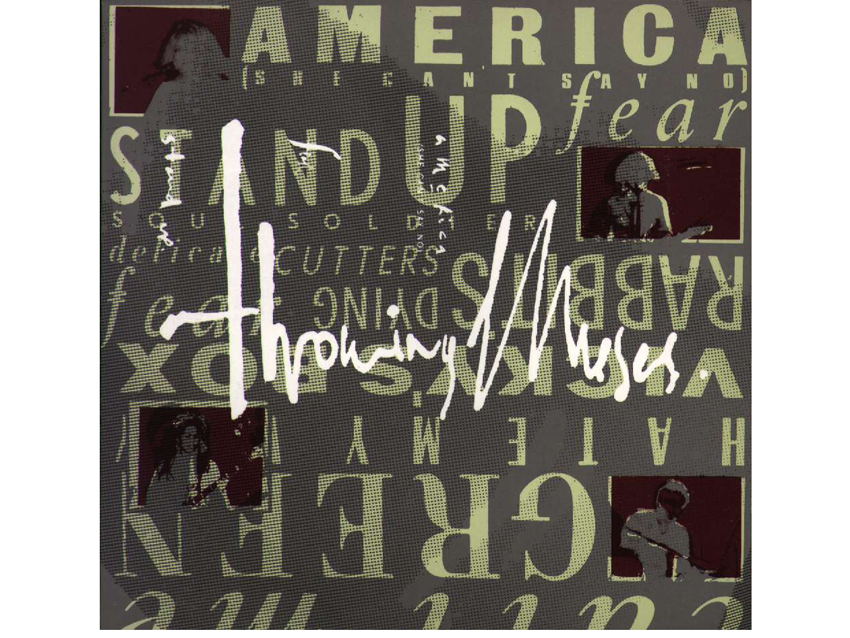
Throwing Muses - Throwing Muses (1986)
“John Reid was my manager at the time. He managed me for a long time, for like 25 years or something. We went for a few meetings with various record companies, just to say hello and be introduced.
“We went out for a drink with Ivo Watts Russell, who said that he had a cassette of this band Throwing Muses in his car for six months. He kept listening to it while driving around London. He didn't know what to do with it, but it just got under his skin, really. He sent the cassette to me, and I really liked it, too.
“Kristin [Hersch], at the time, I think she was about 18 or 19 maybe, and she was pregnant. The lyrics were just amazing – I found them very deep. Coming from a young person, they were very expansive and very emotional. Very interesting song structures, as well.
“Basically, it was a leap of faith, because I'd never done anything for Ivo before. We hadn't met the band. I'd spoken to the Kristin once on the phone. Ken Goes was their manager; in actual fact, he was managing the Pixies as well, but no one had ever met Ken at that time. Ivo sent me over with a check that I had to give to Ken Goes to record the album. That's what we did. We went to Long View Farm studio in Massachusetts.”
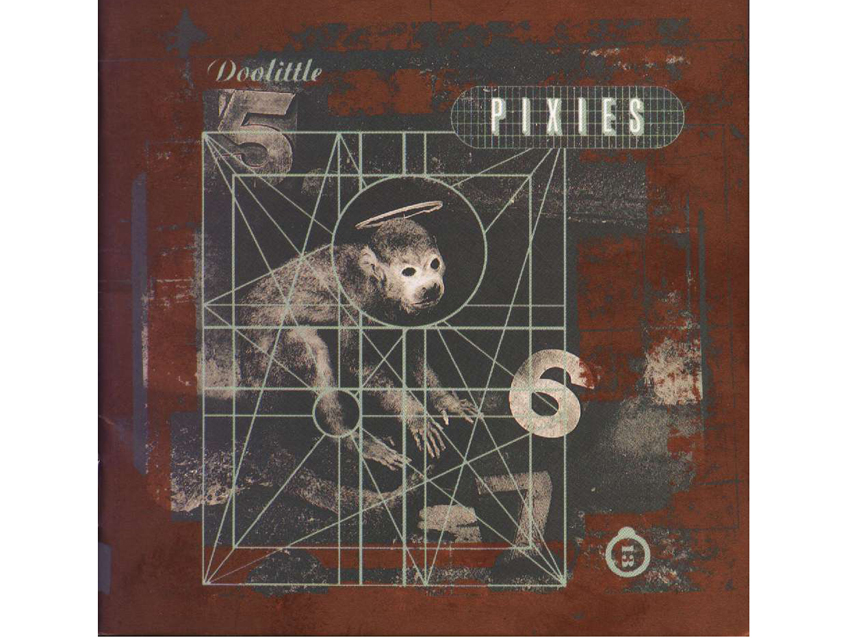
Pixies - Doolittle (1989)
“I met them briefly at a Throwing Muses gig. They were already booked to do Surfer Rosa with Steve Albini. When they finished that album, Ivo didn't think they had a radio single, or didn't think that their versions of two of the songs were quite right for radio, and they asked me if I'd redo them. I recorded Gigantic and River Euphrates; we rerecorded them in London. So Doolittle was our second recording session.
“It was all about the pre-production. I'd met Charles before, and I invited him to come over to my apartment with an acoustic guitar so we could talk through the demos, play the songs and try to work arrangements out before we went into the rehearsal room to bash them out with the band. It was just so we could get on the same page.
“It was really funny with Charles: He doesn't really like doing things the same way twice – it's boring to him. If he played the verse, he didn't really want to do that again the next time the same. A lot of the songs were short ditties – in and out, bang, bang, bang. Nearly all of them were under two minutes. Within that, he'd have a verse, a chorus and the basic song structures.
“I was trying to expand on it. I'd go, ‘Let's put another chorus in here.’ He was a bit reluctant to change things – not because it didn't excite him to do that, nor because he was trying to be difficult: ‘Well why?’ he ask. Constantly – ‘Well, why?’ We did this for about a day, and the next day he came in, and it was the same. We went out for a walk; we went round to the Tower Records and got Buddy Holly's Greatest Hits.
“He went, ‘Look, Gil. If you look at Buddy Holly's Greatest Hits,most of them are about two minutes. They're not long songs; there's never a three-minute Buddy Holly song.’ That was his sort of ‘Why do we need to do long? It doesn't need to be long; it needs to be in and out and fast.’ It was a nice learning curve for me as well, just to keep things snappy and interesting.
“The other thing with the Pixies that was always really important was the portability: It had to be portable; they had to be able to play it. As a producer, it was nice because you had to think about all the parts and what they were doing, and not rely on a lot of overdubbing to make the song work. Sometimes less is more. Charles’ chord structures are really interesting. The whole way his melodies work – they’re quite haunting. You don't need to put too much on there.
“We'd just finished mixing Doolittle at The Carriage House. Everyone had gone home, and I was at the studio by myself because my flight wasn't until the next day. There's a few times when you just know you've just made a classic album or something that's really important. I think Ocean Rain was one of them, Doolittle is one of them, and The Color And The Shape is another one that I could throw in there. You know when you're finished them that they're really important albums. They just feel like they're going to be around for a while and that people are going to like them. I was sitting in the bedroom. I had a little moment to myself, just because there was all snow outside, and it was just a couple of weeks till Christmas, and it was all a bit like, ‘Wow, what just happened?’”
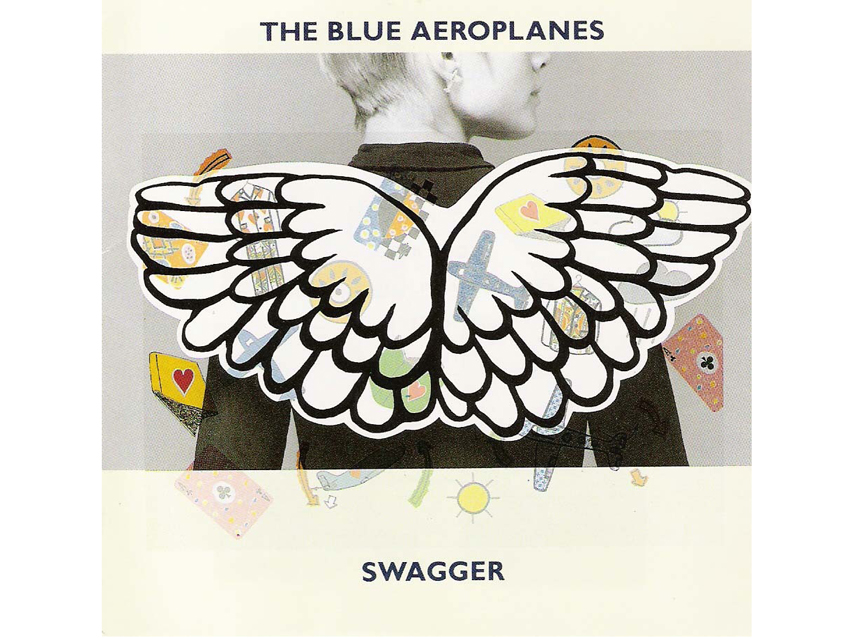
The Blue Aeroplanes - Swagger (1990)
“There were things I liked when I was a kid. There was folk music and there was rock music, sort of art-pop rock. There was a little band called Deaf School that I really, really liked. They were like an arty band who did really melodic power pop but with an art twist to it. The Blue Aeroplanes, when I first heard them, reminded me of that.
“Gerard is a poet – that's fundamentally what he was. He wasn't really a singer as such. It was the start of that spoken-word sort of thing. He was a poet who was in the rock band, a bit like Patti Smith, I suppose. They had three guitar players, and they were all phenomenal.
“They were really, really nice people, and it was just a real joy to make that album, I must admit. We all got on really well. We did that at Genetic Studios, which was one of the first residential studios I’d been to. That was great because it allowed me to spend a long time with the band, just chatting and getting to know each other and talking about music.”
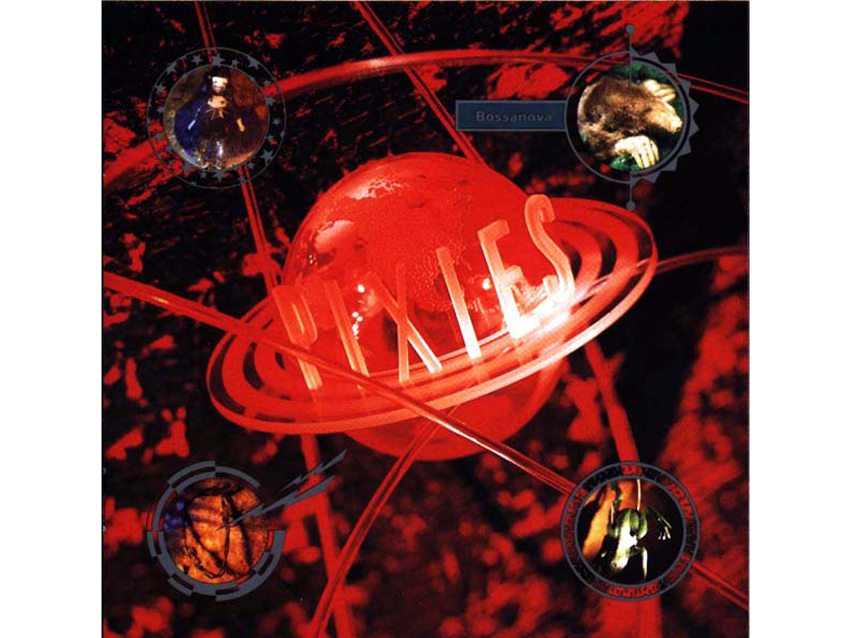
Pixies - Bossanova (1990)
“I don't think we felt that much pressure, but we knew what we had to do; we had expectations, I think. We didn't have all the songs worked out for this album, which was sort of good and bad at the same time. There were some demos, but a lot of times we just went to the rehearsal room and played round with some ideas, which was great, because I felt really involved.
“It was a different process at the time. Everyone had moved. We recorded Doolittle in Boston because that’s where everybody lived. By now, Charles had moved to Los Angeles, so we all ended up in LA.
“The whole period was quite intense because they were constantly recording or touring. They were in each other's pockets for long periods of time, like any family, which most bands are like. They had the moments when they annoyed each other. There was definitely some of that going on, I would say.”
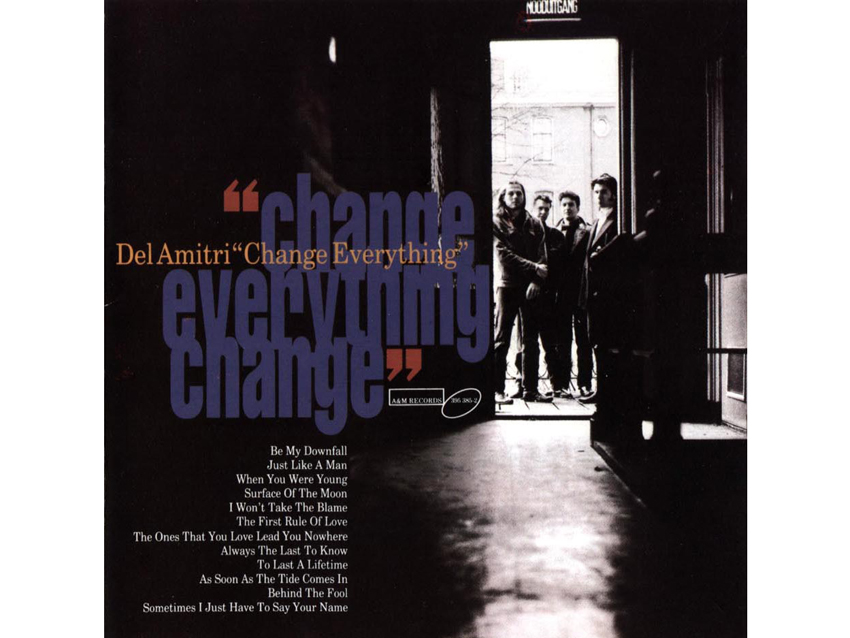
Del Amitri - Change Everything (1992)
“I actually did a session with them up in Scotland before they got signed to A&M. I did this for the publisher, with a view to do the album when they got signed. I think we did four or five songs to get them the deal.
“When the second album came up, they came back and asked me if I'd like to produce it, which was great. The people I love working with, I always think, are storytellers. No matter what genre of music we're talking about, they can write a really good story. The way they sing, it's believable – you believe what they're singing about.
“Justin [Currie] is an intelligent man, and he writes in a really melodic, storytelling way that I find appealing. Working with him was great for that. It wasn’t overly rocky, which I quite like. It's a bit like the Counting Crows thing: They're a rock band, but they're not the Foo Fighters or the Pixies, not that type of rock band.
“The Last To Know is obviously about a relationship and breaking up with someone, so it was quite heartfelt. I can't remember what form it came in; I think he must have had some sort of demo. We definitely would have spent a little bit of time just sitting around playing songs on acoustic guitar and talking. I haven't done it for a little while, actually, but even the first time I met with Dave Grohl, and every time I've done an album with the Foos, I sat down with him and an acoustic guitar. We would play songs and talk about arrangements.”
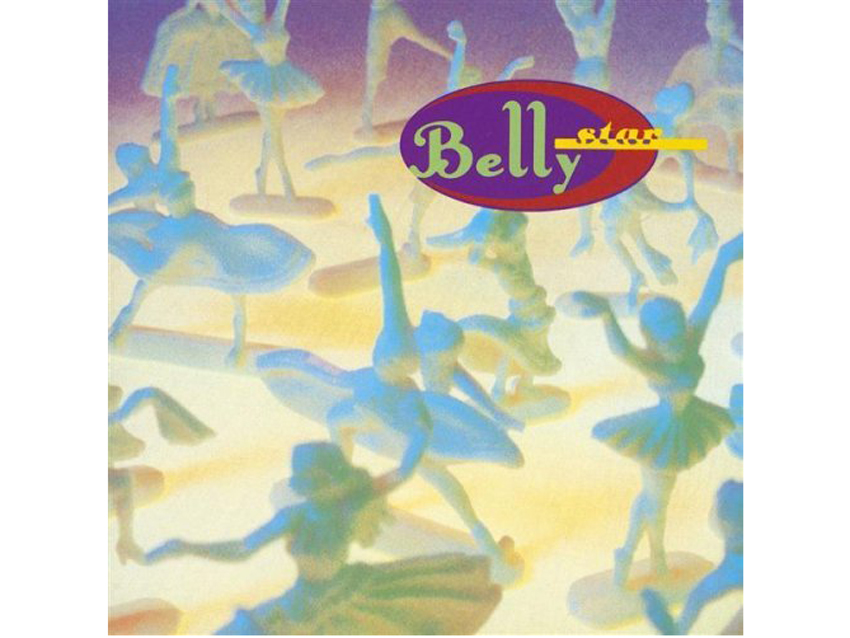
Belly - Star (1993)
“Tanya Donelly was actually in Throwing Muses. She was Kristen's step-sister… Then she had the period of time with The Breeders. The Breeders and Throwing Muses camps were always very close.
“We'd always kept in touch, and then she was started doing Star. I didn't do all of the album; I did four tracks on it – Gepetto, Dusted, Slow Dog and Feed The Tree. I would have liked to have done the whole album, to be honest. I can't even remember why I didn’t. I think it was to do with budgets.
“With a lot of artists, they have the general idea of the song, but their arrangements aren’t always there. Generally it’s the intro or the middle of the songs that need work. The thing I pick up on with lots of bands are their transitions, how they start songs and how they transition into a verse, into a chorus or out – those sorts of points.
“They did quite a lot of it in Nashville, and then we recorded the songs that I was working on in Liverpool. We didn't have that much time to do pre-production, so we did the pre-production and recorded in Liverpool at Amazon Studios. I’d been producing for a while time and hadn’t been back to Amazon in years. That was nice, going back to Liverpool to record.”
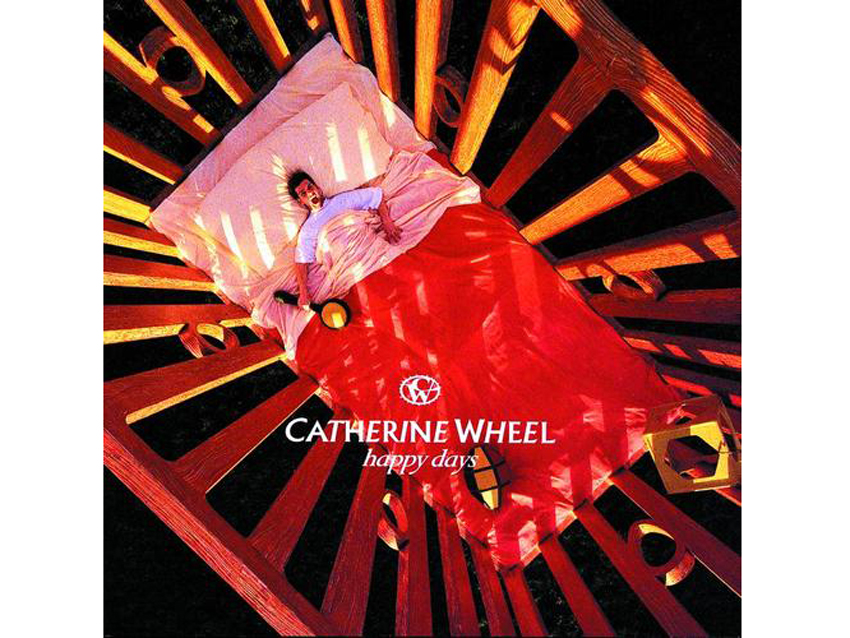
Catherine Wheel - Happy Days (1995)
“I already had done the album Chrome. In actual fact, when I was doing that record, they booked me for their next album there and then. To be honest, I thought Catherine Wheel were going to be massive. I never did understand why they weren't bigger than they were.
“They did their first album, Frement, with Tim Friese-Greene. It was in that period of total shoegazing, where people did a lot of droney type of music. I don’t know if Brian Futter is playing any more, but he was an awesome guitarist. He was great. The band was really good at doing soundscapes, just big landscapes of sonics.
“Some of the songs themselves needed work just to ensure that they did survive, as I said, on an acoustic guitar. We did a fair amount of that, just went through the songs to make sure they were good and were all working. I suppose that's one of the big things I did with them, and make sure that the rhythm section was tight.”
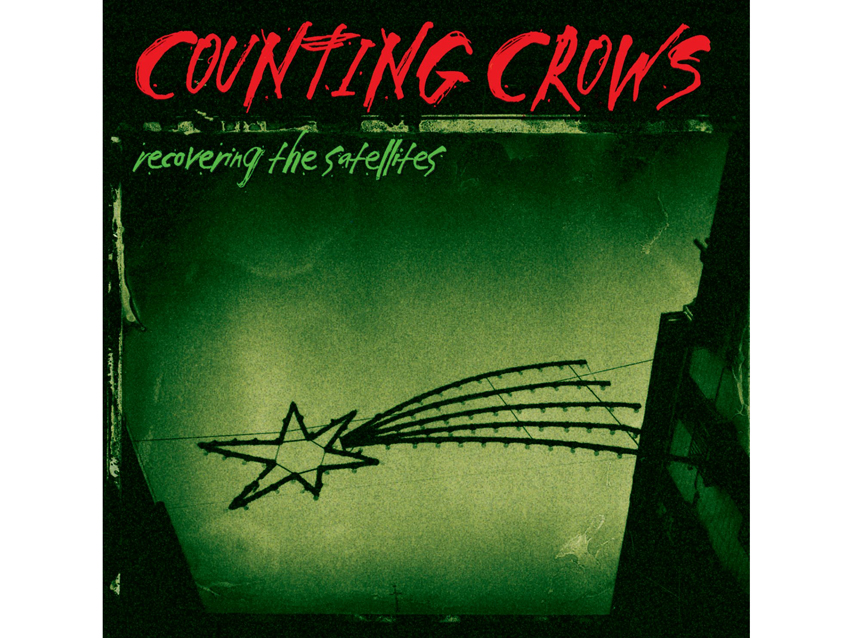
Counting Crows - Recovering The Satellites (1996)
“I really liked their first album. I got a call from Adam Duritz, who asked me if I wanted to do the band’s new album. I was like, ‘Wow.’ Then they flew me out to LA for a meeting and to see them play. I asked them, ‘Why do you think I'd be good for this?’ Basically, Adam wanted to do more of a band album, because they'd toured the first album and were feeling like more of a band than when they did August & Everything After. It wasn't really so much a band on that album; it was more put together afterwards, when they started touring and stuff.
“It's the most extravagant album I think I've still ever done really to this day, because they'd sold 10 million albums then, which was ridiculous amount. I wasn't very well off then at all, but I was sitting with them around the breakfast table, and they'd be checking out stocks and shares. It was the most bizarre thing.
“They didn't want to do it in the studio, so we hired a house up in the Hollywood hills, just next to the Hollywood sign. It was amazing – it used to be Charles Bronson's old house. It was going pretty well for a while, and then we had Christmas. After Christmas, Adam needed or wanted to go to New York to see some play for a few days, which was fine, because we had loads to do. I carried on recording, and when he came back he got really ill; he got pneumonia or something, so he was ill for about four weeks.
“We carried on doing stuff and overdubbing, but it was a little hard after he got better because he'd been out of the equation for nearly two months. When he came back, I think he just felt a bit disconnected from the whole process and didn't feel empowered with it, really.
“He came in and wasn't liking quite a few of the songs – I thought it was me. I sat him down one day and said, ‘Is it me? Because the last thing I want to do is make a record that you're not happy with. If you don't think I'm making the right record for you, now's the time… ‘
“I think he was really shocked, because he was really happy with me. I think he was just unhappy with his situation. He went, ‘Oh, no, it's not you, Gil,’ and we had this long conversation about him not feeling like he was involved in it anymore.
“We wasted a couple of months before we were able to get back on track with the album. Some of the songs we did three or four times with different arrangements, different tempos, different keys. We ended up spending the best part of nearly 10 months on it. It was just difficult at the period. I think some of it was to do with focus – people being focused. Other things were about trying to come up with songs that they relate to, especially Adam, after the big album before. It was a learning curve for me, because I've never really been in that situation.”
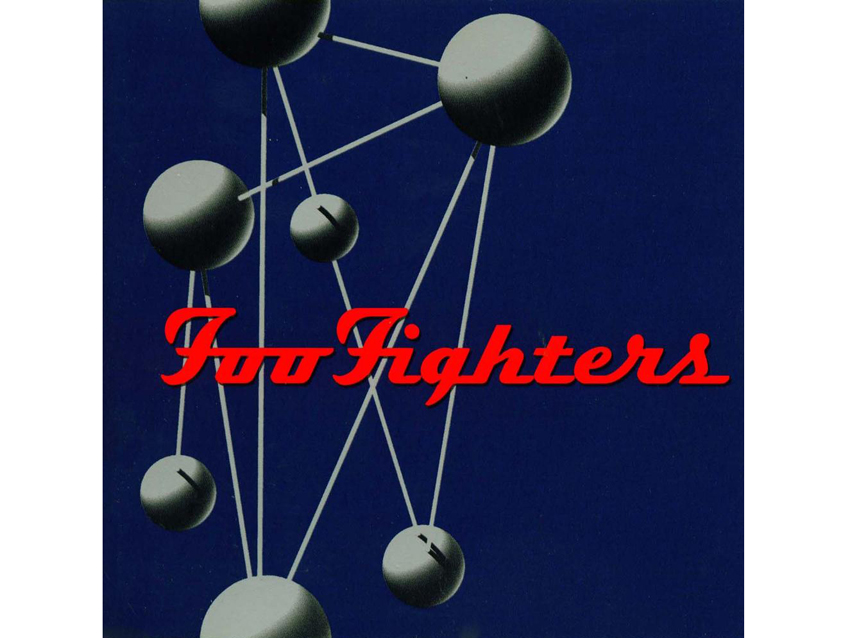
Foo Fighters - The Colour And the Shape (1997)
“It's the same scenario with Counting Crows; it's a very similar thing where by the time it comes to the second album, they've got a band together. The thing about this record was that Dave Grohl wasn't the drummer; he didn't want to play. He was the singer and the guitar player, and he didn't want anything to do with drums. I didn't ever talk to him about drums at the beginning at all. William Goldsmith was the drummer that we started with.
“Dave demoed a lot of songs, and they were quite good. There was a few that we didn't have when we started the album. We had My Hero and a couple of others, but songs like Everlong came later. He'd done a quick demo of it. What happened was, we started recording in October, and we'd done about six weeks and it got to near Christmas. We had most of the album recorded, but I wasn’t really happy with some of songs. Monkey Wrench I wasn't really happy with. A few of them, I wasn't really happy with the drum parts. They didn't really have the finesse that I wanted.
“I was good friends with William Goldsmith at the time. He'd be the person I'd go out and have a drink with at the end of the night. I was trying to talk him through it: ‘You've still got to be yourself. You can't be somebody else.’ He was convinced that people look at Grohl and think he's just a big powerhouse. But what he has is control: He flicks things and he's consistent. I think, as a drummer, you have to be consistent. You can't just play so hard that you choke the kit all the time, and then you're exhausted as well.
“It was hard work doing the drums for various reasons. My job as a producer is to make sure I get the artist through the process of recording. You've got to deal with those insecurities that come with the recording process and encourage the elements that need pushing; if they're getting lazy, that has to be dealt with. Also the sense of security – you've got to make them feel safe.
“By the time we got to Christmas, we'd basically recorded the album, more or less, but I wasn't really happy with it. I told Dave, and he suggested that he would have a go at a couple of the drum tracks. Because we'd done nearly all the songs to a click track, the backing tracks were pretty tight. Dave went in, and I think the first one he did was Monkey Wrench. We got a drum sound, he had one run through, and then we recorded it. I just nearly fell of my chair – it was just unbelievable. He'd just done everything we'd talked about; everything that was missing in the original recording. Yeah, that was a bit of a moment for me.”
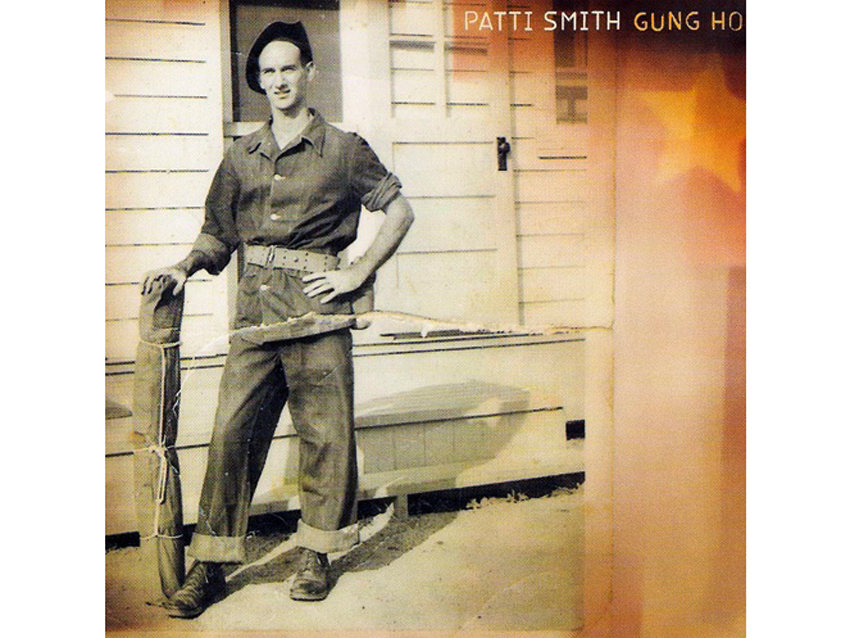
Patti Smith - Gung Ho (2000)
“I had engineered for Lenny Kaye when he did the band James' first album at Amazon studios. We got to know each other really well, and we stayed friends. Just before they did Gung Ho, Lenny rang me and asked me if I'd be interested in producing. That was it, really. It was because I was friends with Lenny.
“Talk about spontaneity in the studio. Gung Ho itself is like a mini epic on the album. That was purely spontaneous. We just set up live, and then I just sat with an open mouth as Patti went off and did her spoken-word train of thought vocal. That was just the performance, what happened at that moment. It wasn't planned, it wasn't rehearsed – it wasn't anything. The whole thing just emerged from nothing. Of all the things I’ve recorded, that was a special moment.
“The band members are quite close. [Drummer] Jay Dee [Daugherty], Patti, Lenny and [bassist] Tommy Shanahan have been together since '74 or some ridiculous amount of time, so they know each other very well. There's a certain chemistry that happens. I think that when Patti's got an idea, or sometimes Tony will come up with chord sequence, or Lenny will come up with something, or they come up with something together, they generally defer to Patti, or they see what Patti comes up with to make it work. If she likes it, great; if she doesn't, or she's not feeling anything – it doesn't inspire her for something – she might have a musical idea herself or some words that she wants to evolve or to make into something.”
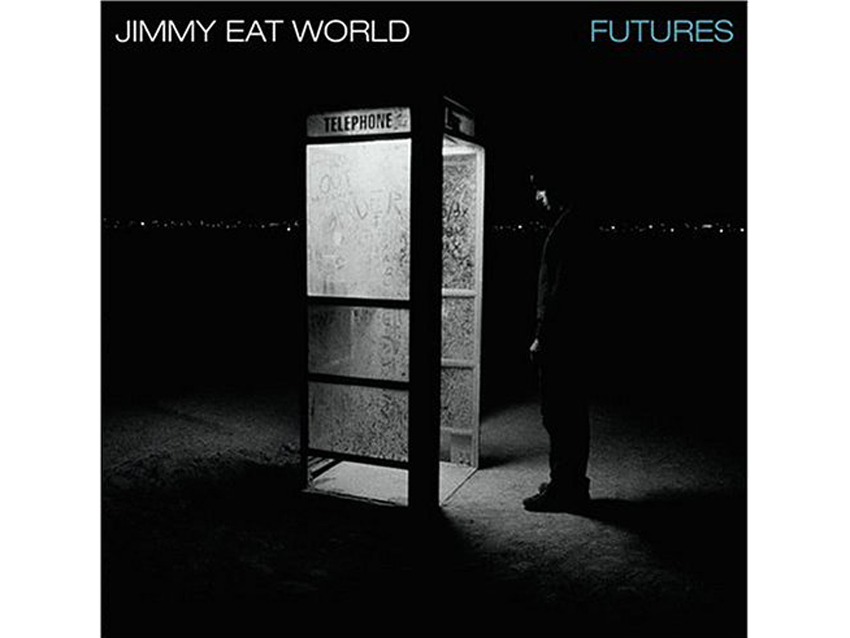
Jimmy Eat World - Futures (2004)
“I loved Bleed American – it's a great album. Generally, I was a fan. This came through John Silva, who manages the Foos and Jimmy Eat World, as well. I remember John calling and saying, ‘Do yourself a favor. Get over here.’ And so I said, 'Actually, John, if you want me to come over, send me a ticket, please.' So I went over and met them.
“They'd done three albums with the same producer [Mark Trombino], including Bleed American, and he'd obviously done a fantastic job with them. I think when it got to this, it just felt a bit stale to them, and the demos felt a bit stale to me; they didn't feel very exciting.
“Some of the arrangements were flat in the parts. The songs were basically good, but they didn't feel fulfilled. They hadn't come to fruition, really; they were still embryonic. Even though the band were supposed to have finished them, certain things didn't feel finished. The parts weren't quite right, and some of the rhythm section parts were a bit pedestrian.
“We had a chat about it, and then I went over and spent three or four days with them in Arizona at their studio, which was great – it's just a warehouse in Phoenix. We went through structured songs and edited stuff around; we got different arrangements and talked about what was needed. Generally, it just got everyone excited, and it reconnected them with the album that was to become Futures.
“What was a bit weird was, it came out as a double album with the demos on one side. I remember I was in New York when it was released, and I went to Tower Records. It was a double album: one CD was the demos and the other was my versions. I just died. I said, ‘Oh, my God!” I don't think that had ever happened before: stuck the demos out at the same time as the album.”
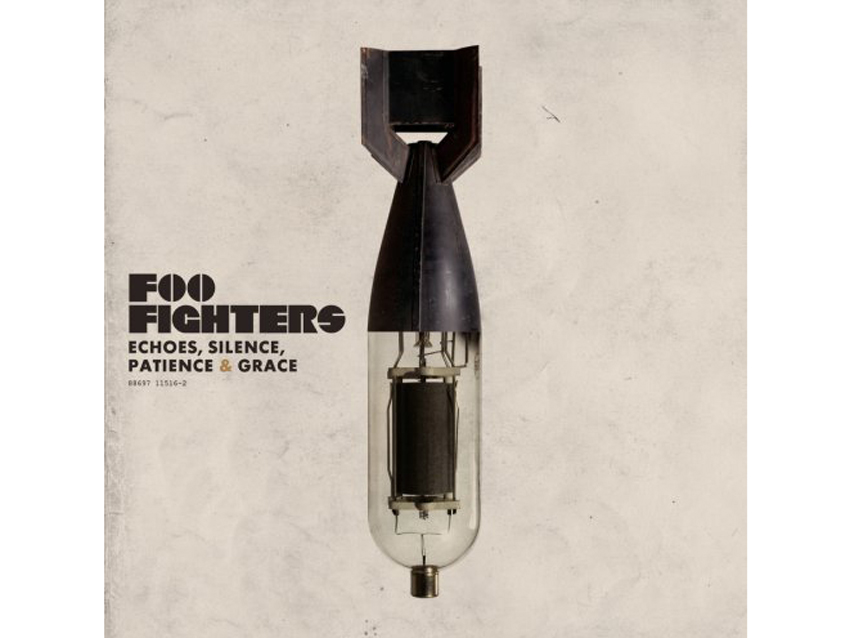
Foo Fighters - Echoes, Silence, Patience & Grace (2007)
“I was supposed to do an earlier record with them. I was actually in Church Studios in London, where we were to start pre-production. They'd just finished the V Festival or something. I was set up, I had my Pro Tools rig there and was waiting for them, and they didn't turn up. This was at the time Taylor had been hospitalized.
“He got really sick for ages, and it took him a while just to get better. The whole thing was put on hold for months. Every time we talked to any person at the Foos office, they just didn't have anything to say, because they didn't know what the state of play was and how Taylor was going to be, which was totally fair enough. I think what happened next was they ended up going to Dave's studio in his basement to do some demos, just to see how Taylor was. I don't think they wanted to pressure him with me or any producers.
“It was a bit of a low-key thing. They ended up just doing the album There’s Nothing Left To Lose on their own, really, or maybe Adam Kasper did that one with them. I think they'd just gone in to see how everybody got on and to see if Taylor was all right and stuff. Obviously, he's brilliant now.
“Then one day, Dave rang me. I just said to him, ‘Look Dave, I don't want get excited about doing an album. Obviously, I'd love to do an album with you, but if I get excited and then I don't do it, it's just going to be horrible, and I just don't want to go through that.
“He was like, ‘No, I really think we need someone to come in now and kick us up the ass, really.' I think he felt like the band were going into cruise control a bit, and he wanted to up the ante again. The band was pretty damn big at this point. There was somebody playing violin, someone on keyboards, and there was percussion player. There were lots of people involved in the Foo camp at that point.
“I think Dave enjoyed the acoustic parts of it. Again, we've always played songs, me and Dave, on acoustic guitar when working on arrangements – just the guitar and the vocal. Kaki King is on the album; she plays on Ballad Of The Beaconsfield Miners. She was great – really, really good. I always love it when you see David genuinely excited to be working with somebody. It was good for David, because we did that live, David and her together. He had to practice so hard to make sure he could do that, because it was a very intricate acoustic part.”
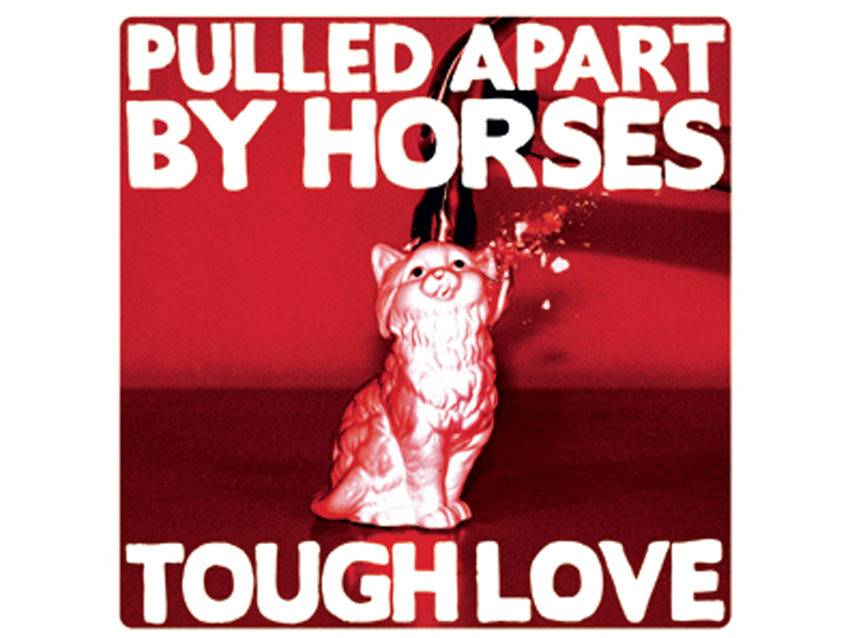
Pulled Apart By Horses - Tough Love (2012)
“I think it was one of their A&R people who sent me some demos. There very little money involved. It was just like trying to do a fast rock album. I went to see them at Reading; they played inside this tent. I just loved them – I loved the raw energy of it all.
“I went up to Leeds and spent a couple of weeks in a rehearsal room with them, just playing around with songs and arrangements. We did the pre-production in, like, four days, and then after a week we did another few days. Then we went into Monnow Valley in Wales, a studio there, and recorded it really fast. I think we did the whole thing in about 12 days or something, which is pretty fast for me. I'm normally a few days a song.
“With them, it was important to try and keep the energy levels of it, because that's what I liked when I saw them live. It doesn't happen as much now, but I tend to try and make sure I see a band live before we start recording, just to get a feel for what they're about, really, and how they interact. It's a whole different thing when you get in the studio; it can be a different sound than you get when you're out on stage.”
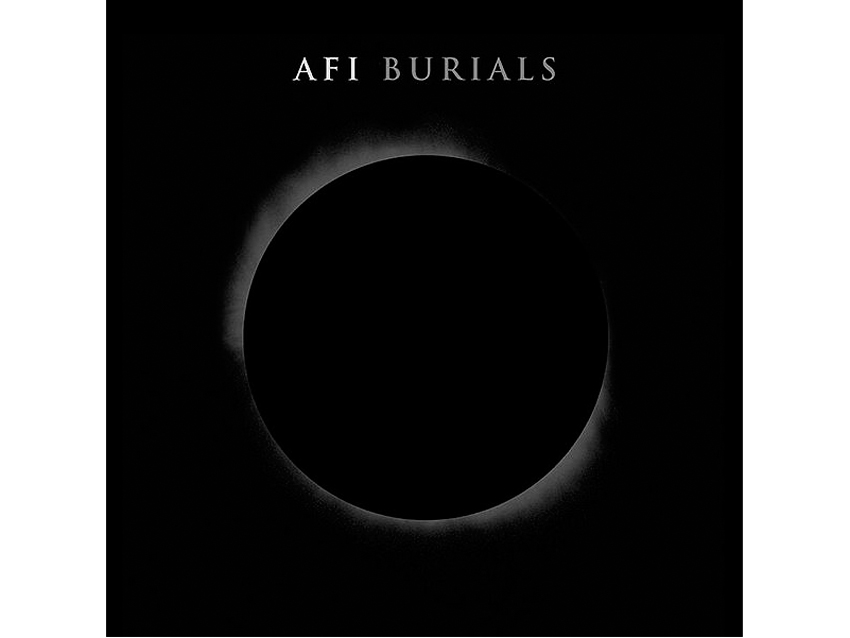
AFI - Burials (2013)
“I’d actually seen them play a number of shows, and I really liked them. It was just one of those things that came through. We got some demos in at the office, and I just really liked them and thought they were great. They hadn't done anything for quite a while.
“Jade [Puget] and David [Havok] worked really hard on the demos. Actually, they were probably some of the most complete demos I'd had for a long time. The band wasn’t playing them – they were all programmed up – but the songs were great.
“I think what they needed from a producer, more than anything, was just to bring the band together, to make sure the rhythm section worked within the framework of the other players. Jade and Davey had been together for a while writing the songs, and their thing was very tight. I needed to make sure that the songs came through not as Jade and David songs but as AFI songs.
“It was good. They’re really nice people. Jade, I think, is a phenomenal writer and guitar player. A talented musician.”
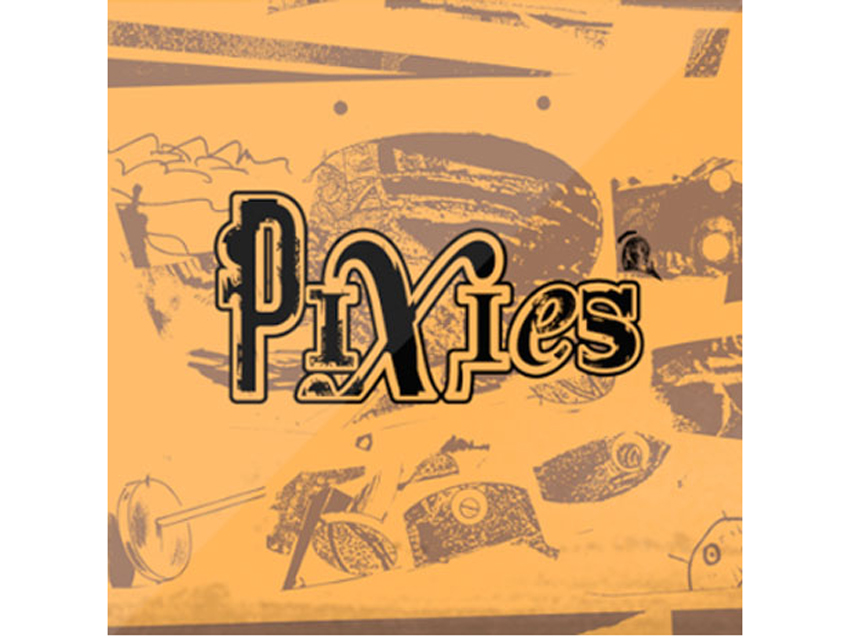
Pixies - Indie Cindy (2014)
“It wasn't actually done as three EPs; it was done as an album. We went in for a long period of time and recorded all the songs, but then we released them as three EPs, which I thought was a cool thing.
“We were talking about this for a long time. I've been friends with them all the way through anyway, so we all just kept in touch, and we talked about it. They tried to do it themselves a couple of times, but it hadn't gone very well. It wasn't very focused.
“I think they went in for a week a couple of years ago, and I got a call from Charles: ‘Gil, without a producer, without you, I'm never going in to record with the band again.’ They needed to be focused; they needed to be brought together.
“Charles had some songs, but when I heard them they sounded more like Frank Black songs than Pixies songs. When the band got them, they got a bit overly complicated. Charles is a great guitar player – he's very rhythmical – but it can be a chord strum. It can be ‘de-de-de-de-de-de-de-de,’ he's like playing the bass line. He's playing everything on his guitar because he's been doing a lot of live shows by himself. It took a few conversations just to refocus him into writing a Pixies song.
“He came over to my house in Dorset. I've got a little studio there. He had a few songs, so we demoed them all. We did Indy Cindy, Greens And Blues, Silver Snail, What Goes Boom, Ring The Bell and Andro Queen. We then presented them to the band with the bass lines, some drum parts, and some backing vocals and stuff. They liked them. They could see the songs as Pixies song. They all bought into it, and that's when we decided that they'd just go in the studio and try to record those songs at first.
“Kim isn’t on the album. She was there when we started it. She did play quite a lot of the songs at some point, but then she decided she didn't want to be on it. What happened was, I was talking with Charles, and he said that he’d gotten a couple of other ideas. We talked about them and bashed around and decided that we were going to try them with the band. Kim wasn't comfortable with that. She didn't want to do that kind of jamming on song. She said, ‘I didn't get the memo for that.’
“There were personal things, too: Kim’s mum wasn’t very well, so she was a bit distracted. I think she'd decided she had to go back to see her mum, and then I thought she'd just come back after a week or something, but one thing led to another and that didn't happen. She did like the demos, though.
“When I think about how the band has changed over the years, they’re really not much different. Charles is a lot more tolerant. He’s calmed. He did a lot of painting while we doing the record. He'd just go off and paint and think.
“Joey's always a bit of a worrier in the studio; he worries quite a lot about anything that you could possibly worry about. He hasn't really changed that much at all, really. The way I work with him is a bit like the way I do a lead vocal: I do lots of takes and try different things, and then I comp something together for him to listen to. Then he learns that and we develop the idea from there. There was a certain amount of that again.
“David… Dave is a really good drummer. He plays really well; his timing and feel are great.”
Joe is a freelance journalist who has, over the past few decades, interviewed hundreds of guitarists for Guitar World, Guitar Player, MusicRadar and Classic Rock. He is also a former editor of Guitar World, contributing writer for Guitar Aficionado and VP of A&R for Island Records. He’s an enthusiastic guitarist, but he’s nowhere near the likes of the people he interviews. Surprisingly, his skills are more suited to the drums. If you need a drummer for your Beatles tribute band, look him up.
